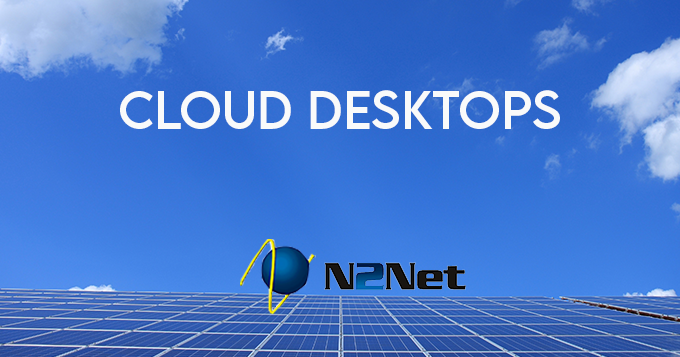
In yesterday’s blog, we explored the primary motivators behind businesses adopting the cloud. We looked at the technical and financial reasoning. The competitive advantage the cloud provides is also a key factor.
Today we are going to focus on Cloud Desktops. Cloud Desktops have been available for several years and are growing in popularity. They provide a cost-effective avenue for businesses to meet many of their goals.
What is a Cloud desktop?
For the purpose of this discussion a cloud desktop is a virtual machine housed in a data center, connected to all the company’s other desktops, printers & server infrastructure so it acts like a computer in your office. To use this desktop the user either uses a client on their existing machine or a special “thin” client that is cheap and has not much more than a place to plug in a keyboard, mouse and monitors. No data resides on either client or device, so there are a lot of advantages to this structure.
Businesses are looking for three main things when it comes to employee resources. They are looking for low cost, secure and highly available resources. Cloud Desktops achieve these requirements.
Businesses can add or reduce their number of devices as needed. This aids in allowing their IT budget to adapt to business needs. Since purchases happen when needed, it is easier to track costs.
This opex based purchasing model, allows businesses to get off the hardware “merry go round.” They no longer must include hardware replacement into their IT budget.
Cost savings are not the only benefit of cloud desktops. Other factors need to be considered when analyzing if cloud desktops are right for you, so security and availability should not get overlooked.
Since Cloud Desktops enjoy the benefit of running in data centers, they share many of the same features. Data Centers are designed to be always available. For a data center to suffer an outage or service interruption is rare. The steps data centers take to ensure their availability are vast.
Data centers must look at every area that could cause an outage, from redundant power, multiple redundant and huge bandwidth internet connections to battery backups. Traditional business and home offices seldom have the same level of redundancy in place.
Advanced security features have been available for the enterprise for over a decade. Data centers and Enterprise businesses use threat management techniques and systems to combat security breaches.
These advanced filtering features are finally available to small businesses. When using cloud desktops even small businesses can implement home office workers, road warriors, multisite locations without any significant infrastructure investment in enterprise grade equipment.
The use of cloud infrastructure, the specialized staffing and resources to support cloud desktops including helpdesk, troubleshooting and security support, and the ability to share the cost of those resources over thousands of desktops make moving to cloud computing both affordable and compelling.
While we have only scratched the surface discussing cloud desktops, we are certain that the cost savings combined with the increase in security make cloud desktops an ideal choice for most businesses.
Before Covid-19, many businesses had still not migrated to Windows 10. Hardware such as desktops and laptops were in short supply. The work from home rush exhausted the remaining supply.
Virtual desktops do not suffer from hardware shortages. There are many ways to access the cloud environment. Thin clients are a popular option. It is also possible to use existing hardware as a thick client. The use of existing hardware can help reduce costs and provides for reusing hardware. Reusing hardware keeps it out of landfills. Since the computing takes place in the cloud, the thick client or thin client handle accessing the cloud environment.
Check back tomorrow where we continue discussing the benefits of the cloud. Next we will dive into why your next server will be a cloud server, and not physical hardware.
